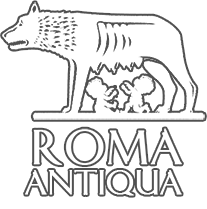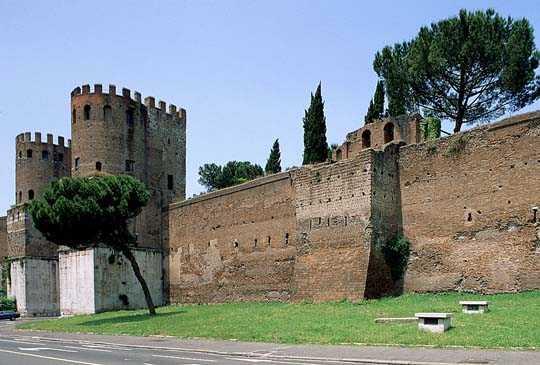Roma antica foro romano colosseo altare della patria circo massimo roma virtuale 3d lazio
effetti-ottici-eng
inglese



Walls and gates of Rome
The beginning of the fortification of Rome took place after its building, since the legendary furrow traced by Romulus, who marked a real religious boundar , which was called lately “pomerio” ("pone murum", that is "after the wall"). A space of sacred land, situated along the walls of the city, where it was forbidden to build or to dwell or to plough, or to bury the deaths, a magic bound protected by taboo and prohibitions till the republican period, where the holiness of the walls was abolished. Roma is the only European city that has preserved all the ancient perimeter of the walls. They developed during the centuries, since the origins of the city till the XVII century, and they can be divided in six different defence systems:
Romulean walls
they are the first quadrangular wall of Rome, it surrounded an area with 285 hectares with three gates, Mugonia, Romanula and one by the Forum Boarium.
Servian walls
real defence walls, they were 11 km in height and surrounded 6 up 7 hills because the Capitole Hill had its own fortification. They were built around the IV century a.C. under Servius Tullio sixth king of Rome. They had 10 gates among which Porta Viminale, Porta Esquilina, Porta Querquetulana, and Porta Caelimontana.
Aurelian walls
they were commissioned by Lucius Aurelian emperor of Rome, and erected between 271 and 275, they stretched over 19 Km and with them many gates were opened, corresponding to the main roads (consular), and many minor gates (the “posterulae”). These walls were improved by Maxentius and by Honorius as a protection from the danger of the Goths, he doubled the previous height (6-8 metres).

Leonine walls
the name is taken from pope Leo IV which commissioned them after the Saracens sacked the basilica of St.Peter in 846. The works were finished after 4 years, a wall with 44 towers, 3 gates and 144 merlons about 5 km in length. During the papacy of Niccolò III the Passetto (or Passage) of Borgo was added. It linked Castel Sant'Angelo with the Vaticane and it was used by the popes from necessity as pope Clement VII did in 1527.
Vatican walls
they surround and delimit the City of Vatican, they were commissioned by the popes, under the papacy of Paul III, Pius IV, Pius V and Urban VIII, to protect the Basilica of S. Peter and the Vatican hill, creating in this way a single line of defence with the Leonine walls, but some gates were destroyed or closed such as Porta Angelica, Porta Pertusa and Porta Fabbrica.
Janiculum walls
they take their name from the name of the hill which they skirt (the Janiculum) and they replaced, with a different route, the perimeter of the Aurelian walls, built in the XVII century, commissioned by Urban VIII and Innocent X, the walls start from Porta Portese and end at piazza del Sant’Uffizio.
